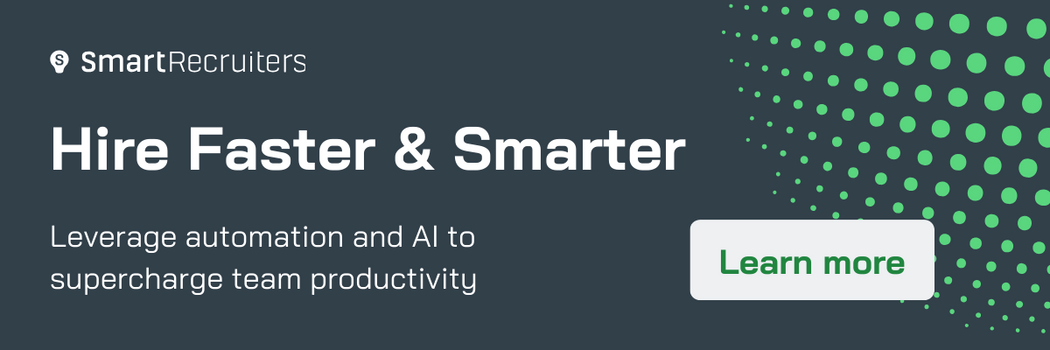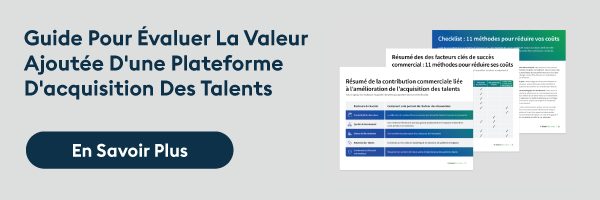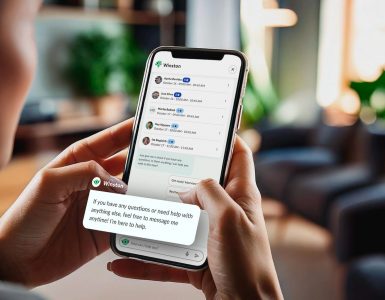John Sumser “published” an HRxaminer article, Star Candidate Experience in 17 steps on Jan 25.
I clicked to read it right away – intrigued – for candidate experience is not usually the focus of articles on recruiting strategy. The article was as you would expect from one of the oldest and most respected voices in Internet recruiting, John Sumser. But, 17 steps is a lot to remember. In fact, the 18th step of the article reads, “and so on.” Then John wrote, “If this list seems familiar, it might be because it’s a seven year old piece,” which links back to a post published in July 2006.
Can’t we be more direct? Can’t we make it simpler? Can’t we make it EEEasier?
The three Es to create a great candidate experience on a careers page are: easy navigation, engage the visitor, and educate.
1. Easy navigation
All kinds of people visit your careers page. Customers, investors, students, teachers, competitors, and, oh yes, people checking out your company to see if it’s a good place to work. Anyone who visits your corporate website may decide to check out your jobs. So, put the Careers link right up front. Don’t make people have to search for it. Don’t bury it in your “about” link, or “contact” link. If you have a great company, then, let your visitors know it’s a great place to work.
Your jobs should be searchable or listed by location, job title and job function. It should be easy to get to a specific job. Each job should have its own page ID, so that all those people who visit, are just “shopping,” but, then see the perfect job for their next door neighbor or cousin or boss and can email the URL and spread the word. Ideally your job ads should have one click sharing features to Facebook, LinkedIn and Twitter. It’s a key component of viral marketing. Don’t miss this opportunity to leverage web of mouth advertising.
2. Engage the visitor
The best way to engage people is with a story. We want to hear stories about real people who work there. In fact, we want to see real people. It’s easy to post videos of real employees talking about what they do and why they love working there. If you don’t have such employees, your problems won’t be solved by a great career page. Candidates want to see your people philosophy and strategy, what HR Influencers are currently called “talent management.”
Now, how do you get great stories? Engage your marketing department because recruitment is a marketing problem (to be discussed in a future article) and they understand how to connect the message to the receiver. Ask your employees to volunteer their stories. We live in a reality television age and everyone seems to be friends with the camera. Can you think of a better employee recognition program? Plus it’ll be fun (if you think making a company video can’t be fun, you haven’t seen Twitter’s Join the Flock viral video…)
Prospective employees also want to know about your products and strategy, so consider including interesting tidbits about a best selling product. Steve Jobs was a master at this. That’s why Apple’s employees are so engaged. They have a common goal of delivering game changing products.
In stories about your company’s leadership, toss the suits. Lose the formality. Theory X is passé, anyway. Show their human side with pictures and videos of them talking to employees in a real work environment. If you have great managers, let your employees brag about how much they get from their managers. If the number one reason people leave is their manager (some say, “People don’t quit jobs, they quit managers.”), what do you think is one of the biggest motivators to join a team?
3. Educate
This is a best practice for careers sites, and job ads. Be transparent.
It will save you lots of time later and get them on the right track, even before they get their badge. What to teach?
- Your values and culture, key for new hires to know.
- Something about your industry and the competitive environment is good, too. Yes, of course, the highly motivated job seeker will do their homework be viewing your Social Media Footprint and your annual report via Yahoo! Finance, but you need to think about what any new employee needs to know to be successful. It amazes me to walk into a client’s facility and discover an employee who knows exactly how his or her job contributes to the company’s goals.
- Keep your topics employee-centric, with information about benefits and career options.
- Information about the hiring process (don’t lie!) is great, too, so that people know what to expect.
 The overall goal is to communicate why great people want to work at your company. Don’t muddy the message with HR compliance speak such as “we are committed to a diverse work environment” and “we are an equal opportunity employer.” If your HR exec insists on such messages, put it in the fine print at the bottom of the page. If you want a diverse workforce, then show pictures that prove your commitment to diversity. When candidates read the “commitment to diversity” blurb, then go to the “leaders” page and see and read little to no diversity, candidates will think the company is lying. If you want to attract the right kinds of people, then look for ways to broaden this depiction of your company culture. Don’t be afirad to ask your marketing department for help.
The overall goal is to communicate why great people want to work at your company. Don’t muddy the message with HR compliance speak such as “we are committed to a diverse work environment” and “we are an equal opportunity employer.” If your HR exec insists on such messages, put it in the fine print at the bottom of the page. If you want a diverse workforce, then show pictures that prove your commitment to diversity. When candidates read the “commitment to diversity” blurb, then go to the “leaders” page and see and read little to no diversity, candidates will think the company is lying. If you want to attract the right kinds of people, then look for ways to broaden this depiction of your company culture. Don’t be afirad to ask your marketing department for help.
Pat Sharp, The Talent Architect blends strategy, technology tools, and assessment tools with marketing magic to create unique talent solutions. Past and current clients include: Motorola, Deloitte, TiVo, and Cloudscaling. Visit The Talent Architect or drop her a line at pat@thetalentarchitect.com.
















